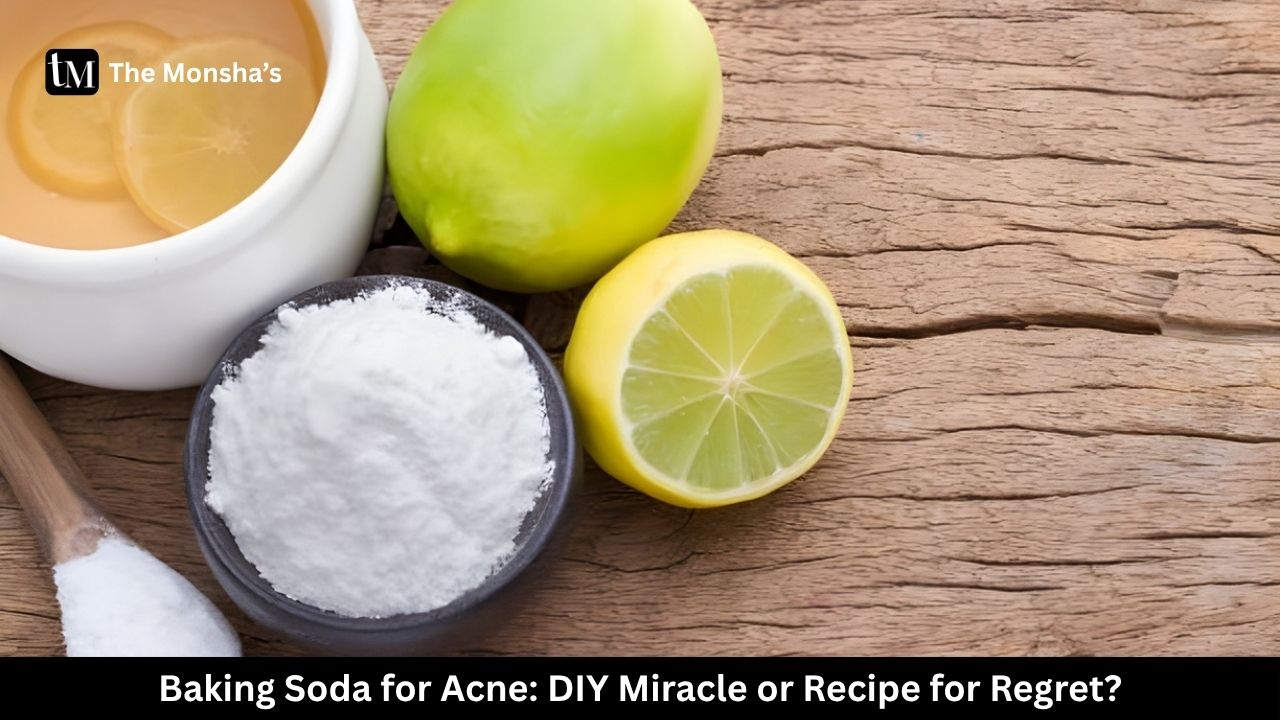
"Pimple ki saazish toh har angle se ho rahi hai… ab baking soda bhi villain banega kya?" 😑Listen, I’ve tried it all. Multani mitti, toothpaste, haldi, rubbing ice cubes till my nose froze — and yes, baking soda. Why? Because some blog said it “neutralises acne bacteria” and “exfoliates gently.” Cut to: red face, itchy chin, and a week of moisturising like my life depended on it.
Baking soda isn’t evil. But putting it on your face, especially if you’re prone to acne, is a slippery slope. Let’s talk about what it does, why it’s trending, and whether your skin actually wants this pantry item near it.
Baking soda (sodium bicarbonate) is alkaline and mildly exfoliating. It can absorb oil and kill some bacteria, but it can also irritate skin, mess up your pH balance, and worsen acne if overused or misused. Don’t apply it straight. Ever. Dilute, patch test, and proceed only if your skin has the personality of steel 🧪⚠️
Baking soda is sodium bicarbonate — a basic (alkaline) salt that reacts when mixed with acid. That fizz you see when you mix it with vinegar or lemon? Yep. That’s the same stuff some people are slapping on zits.
Why? Because it’s:
Sounds great till you remember your skin isn’t a kitchen sink.
Here’s what fans of this DIY hack believe:

In theory, these could help. But in practice? It depends entirely on your skin type.
Let’s just say baking soda is not topping any dermatologist’s list of acne-safe ingredients.
Bottom line? It’s more baking no-no than soda glow-up 🙅♀️
If — and this is a big if — you’re going to try it, here’s what it might help with (mildly):
✅ Oil Absorption
Can help reduce shine and oiliness, especially in the T-zone.
✅ Surface Exfoliation
Can slough off dead skin when used as a very gentle scrub.
✅ Temporary Anti-Bacterial
Might reduce some surface-level acne bacteria.
But again — these results are temporary and inconsistent, and side effects can outweigh the benefits.
This is where things get messy. Using baking soda without knowing what you're doing can lead to:
And no, your skin doesn’t “adjust” to it. If it reacts, it’s a no from your barrier.
If you still want to experiment, here’s the safest low-risk method:
👩🔬 DIY Spot Treatment
☠️ Do NOT:
Skip baking soda if you have:
Let’s be real and compare this trend to stuff that’s actually backed by derms.

Honestly? Not much — and not consistently.

Q. Can I use baking soda as a daily face wash?
A. Absolutely not. That’s a fast track to irritated skin.
Q. Will it lighten my skin or marks?
A. Not really. It’s not a proven treatment for pigmentation.
Q. Can I mix it with lemon juice for a DIY mask?
A. Please don’t. Acid + base = chemical chaos. Not recommended.
Q. Is it safe for teens with acne?
A. Teens = sensitive, hormonal skin. Use proven OTC products instead.
Q. Why do some people swear by it?
A. Some skin types can handle it. But many regret it — they just don’t post the aftermath.
In short: “Agar skin ki izzat pyaari hai, toh soch samajh ke lagao.”Baking soda is not a skincare staple, it’s a home cleaning ingredient. It might give a temporary illusion of clearer skin, but in the long run, it can mess with your barrier and worsen acne.
Stick to proven ingredients. And if you're really fed up?Book an acne-safe facial at home with The Monsha’s — because zits need trained hands, not kitchen hacks 💁♀️